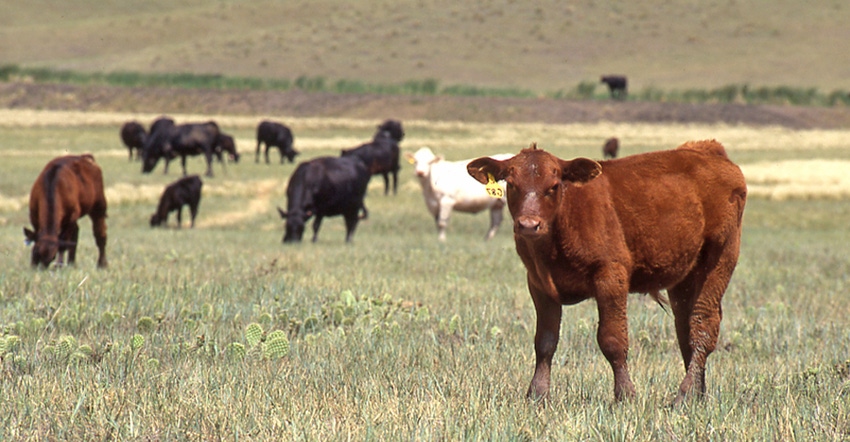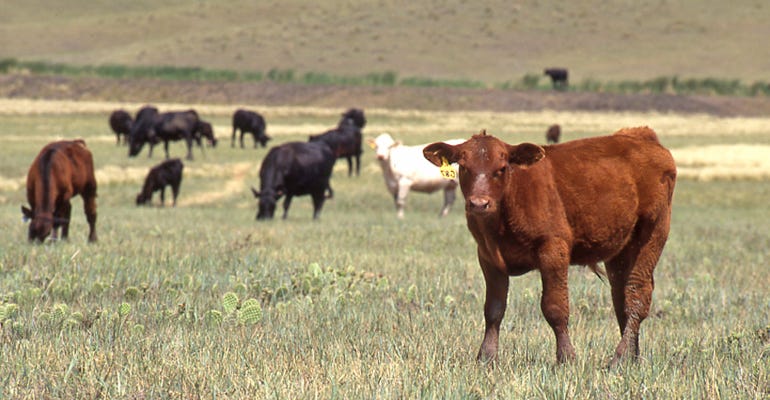Knowing your Unit Cost of Production is critical to making sound management decisions. Given the variability and differences from year to year, most can probably agree that feed cost represent the greatest portion of production costs. Are there ways for us to help reduce feed cost or increase the output on the other end?
October 15, 2017

Sponsored Content
Cost of production – war on costs – cut your costs!! Cost is a four-letter word! Numerous beef extension publications, economic summaries, models, spreadsheets, and more, establish the relationship of beef cow-calf production costs with how they impact returns. In reviewing these, one’s mind can become tied in knots on how costs are measured and how to categorize various expenses in a cow-calf operation. Questions and explanations arise of what costs are fixed, variable, cash, opportunity and what percentage of a certain cost is allocated to the cow-calf enterprise. The variability is great and leaves the interpretation of production costs up to much debate by ranchers, bankers, and economist alike. Still, as margins tighten for the cow-calf enterprise, cost control and revenue generation are key.

The USDA Livestock Marketing Information Center predicts the average cash cost per cow of about $800 for 2017. A lot of cow-calf producers would agree to a number that’s close to this for their operation. Still, some may estimate a range as low as $400 to a high of $1000. Again, it may all be left to interpretation and what’s really being counted.
Knowing your Unit Cost of Production (UCOP) is critical to making sound management decisions. Unit Cost of production is simply defined as the ratio of Costs /Units produced. However, factors entered in the ratio are not so simple. For cow-calf operations, the units produced are pounds of calf. The University of Nebraska-Lincoln has a good worksheet example and description on best ways to calculate UCOP on their beef production website. http://beef.unl.edu/unit-cost-of-production. Everything from equipment cost, to raising replacement heifers, purchasing bulls, to improved weaning weights will affect this ratio. I’ve included a table from the UNL website at the end of this blog that shows an example for a central Nebraska cow-calf operation in 2015. Note that opportunity costs and true labor costs are factored in, and fair market value is used in estimating breeding cost, pasture rents, hay, etc. The numbers illustrated are eye opening!
Given the variability and differences from year to year, most can probably agree that feed cost (pasture and purchased feeds), although quite variable, represent the greatest portion of production costs (up to 50% or more of total cost), thus the attention to fully scrutinize and maximize these resources. Furthermore, how much of the feed costs are purchased hay vs supplement or rented pasture? A self-fed supplement can actually help reduce feed cost overall. The real question to ask is: are there ways for us to help reduce feed cost or increase the output on the other end with smart supplement decisions that lowers overall unit cost of production?
<iframe style="border: none" src="//html5-player.libsyn.com/embed/episode/id/5814524/height/90/width/700/theme/custom/autonext/no/thumbnail/yes/autoplay/no/preload/no/no_addthis/no/direction/forward/render-playlist/no/custom-color/000000/" height="90" width="700" scrolling="no" allowfullscreen webkitallowfullscreen mozallowfullscreen oallowfullscreen msallowfullscreen></iframe>
Enter CRYSTALYX® Brand Supplements into your management decisions. CRYSTALYX® can go to work on your pasture and hay cost and have a huge impact. We have numerous studies showing a 15% or more improvement in forage utilization and or grazing distribution.
So, What’s 15% worth?
15%, while not guaranteed, is a good number to use for illustration purposes.
15% may be the difference between purchasing expensive hay and paying freight to get it home vs utilizing homegrown and often less expensive hay.
15% may be the difference between purchasing hay or renting pasture vs extending pastures in a drought or in cutting cow numbers or reducing stocking rate.
15% may also mean the difference in better health at calving, weaning or breeding that equals less medicine cost and will translate into better performing animals yielding more revenue.
15% can mean less labor and equipment. Feeding hay as a protein supplement or feeding hand fed supplements will often cost as much to deliver to cows as to purchase.
If you look at the overall cost categories, don’t get caught up thinking that adding a supplement only adds to overall cost. Adding CRYSTALYX® as your supplement will cost money but it can reduce other cost categories, like labor and equipment costs, and improve performance. Improved performance will reduce Unit Cost of Production.
CRYSTALYX® Brand Supplements can help stretch forage and improve cow performance and Body Condition on lower quality forage. Use CRYSTALYX® as a grazing distribution tool and get more days to graze. Feeding CRYSTALYX® costs very little in labor and nearly nothing in equipment expenses. Research trials, field trials and years of customer experience have shown the convenience, labor savings and proven performance of these products.
About the Author(s)
You May Also Like



